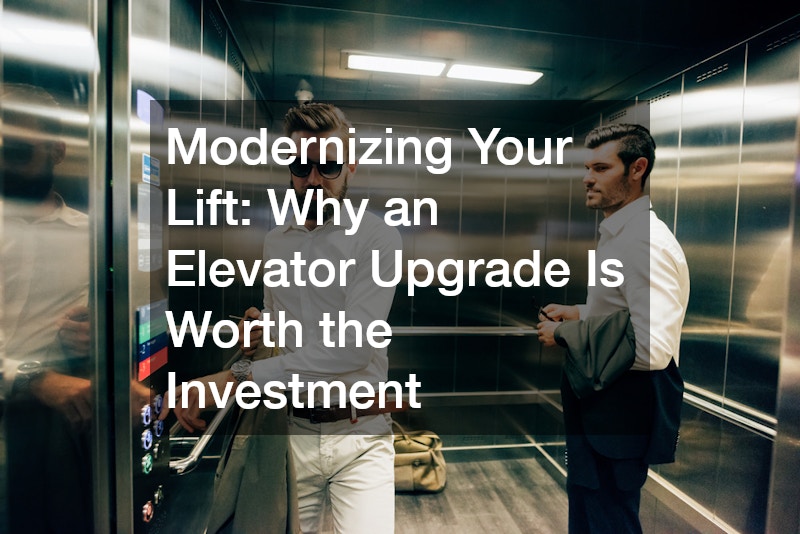Understanding the importance of elevator upgrades in modern infrastructure is crucial for both safety and efficiency. As buildings age, their infrastructure, including elevators, may no longer meet current standards. Regular upgrades ensure that elevators operate at peak performance, providing safe and reliable transportation for occupants.
How Do Elevator Upgrades Improve Safety?
Modern elevators come equipped with advanced safety technology that was not available in older systems. These enhancements include sensors that detect obstacles and prevent doors from closing, ensuring passenger safety. Additionally, upgrades can include better braking systems and improved cabin ventilation for emergencies.
The integration of safety features significantly reduces the risk of accidents, making it imperative for building owners to consider upgrading their elevators. For instance, automated emergency lighting and communication systems are vital in assisting passengers during a power outage. Therefore, implementing these modern features is crucial for maintaining a safe environment.
With elevator upgrades, compliance with modern safety standards becomes easily achievable. This not only protects passengers but also reduces liability for property owners. Elevators equipped with the latest technology are vital in promoting both personal safety and peace of mind for users.
Adhering to the latest safety and building codes is an essential aspect of maintaining any infrastructure. Elevator modernization projects ensure that systems align with national and international building standards. These codes frequently change, requiring property owners to stay informed about the latest requirements to maintain compliance.
Continuous compliance with updated codes also protects the building owner from potential legal and financial risks. When elevators are upgraded, they can simplify the process of adhering to code changes, ensuring that all safety measures are up to date. Consequently, compliance becomes both a protective and value-enhancing strategy for building owners.
What Are the Cost Implications of Modernizing an Elevator?
The initial investment in elevator modernization can be significant; however, the long-term financial benefits often outweigh the upfront costs. Upgrading an elevator might seem expensive, but the modernization helps avoid costly repairs and frequent maintenance common with older systems. This results in substantial savings over time.
Elevator upgrades can increase the lifespan of the system, thus delaying the need for full replacements. From a financial perspective, these upgrades represent a strategic investment in building infrastructure. Property owners are likely to see a return on their investment through lower maintenance fees and extended elevator service life.
In addition to maintenance savings, modern systems are often more energy-efficient, leading to further cost reductions. These savings can, over time, contribute significantly to offsetting the initial modernization expense. Investment in modernization is, therefore, a decision that promotes both economic and operational efficiency.
Modern elevators are designed with energy efficiency in mind, a stark contrast to older models that often consume excess power. With advancements in technology, newer elevators can consume up to 40% less energy compared to outdated systems. This energy efficiency leads to lowered utility bills, contributing to significant cost reductions.
Importantly, investing in energy-efficient technology also contributes to sustainability goals, appealing to environmentally conscious tenants and clients. Reducing a building’s carbon footprint can enhance its marketability and reputation. This dual benefit of financial savings and environmental responsibility adds considerable value to modernizing elevator systems.
What are the Aesthetic and Functional Benefits of an Elevator Upgrade?
The aesthetics of an elevator system can leave a lasting impression on building visitors. Modern designs often incorporate sleek materials and stylish finishes, significantly enhancing the look and feel of any building. Upgrading the elevator car’s interior can modernize a dated building, creating a more contemporary look.
Beyond simple cosmetic improvements, these upgrades contribute to a cohesive aesthetic that reflects contemporary trends and technology. An updated elevator can thus transform an ordinary building into a sophisticated and visually appealing space. Such transformations often appeal to discerning clients who value design and function equally.
Elevator upgrades can significantly enhance the user experience, making daily transportation more pleasant. Technological advancements have made rides smoother and quieter, reducing mechanical noise and vibrations often present in older systems. These improvements contribute to a more comfortable journey for passengers.
Furthermore, modernized elevators are often equipped with intuitive control panels and informative digital displays. These features provide clear and accessible information, such as floor selection and estimated arrival times. Users appreciate such conveniences, which simplify navigation, especially in high-rise buildings.
Enhanced user experience goes a long way toward increasing overall satisfaction for building residents and visitors. By investing in superior functionality and interfaces, property owners can ensure a positive and professional impression of their establishment. These improvements underscore the value of modernization from an operational and experiential perspective.
Investing in elevator upgrades proves beneficial for long-term safety, cost efficiency, and aesthetic enhancement. Upgraded systems not only align with the latest safety codes and energy efficiency standards but also boost property value through modern design and superior functionality. Ultimately, by upgrading elevators, property owners can secure sustainable financial returns, enhance their building’s reputation, and provide an improved environment for their occupants.


